by Keri Mangis: Comfort and safety can only take you so far. Go deeper with yin yoga…
“When we feel resentment because the room is too cold, we could meet the cold and feel its iciness and its bite. When we want to complain about the rain, we could feel its wetness instead. When we worry because the wind is shaking our windows, we could meet the wind and hear its sound.”
—Pema Chödrön, When Things Fall Apart: Heart Advice for Difficult Times
We’re conditioned to seek out comfort and ease, equating both with safety. But safety can lead to “stuck-ness,” rigidity, and a life lived by routine and habit rather than by intuition and curiosity.
Discomfort gets a bad rap. In practice, it helps us:
- Challenge assumptions about others, ourselves, and the world
- Break down well-worn habits, expectations, and crutches
- Prioritize surrender and acceptance over constant achievement
- Cultivate illumination, consciousness, and awareness
In short, discomfort brings valuable opportunities for growth and change.
Yin Yoga Invites Discomfort
Discomfort is hard enough to let in when it shows up uninvited; few choose it voluntarily. In yin yoga, the body is placed in various poses as the practitioner works to stay as quiet and still as possible for several minutes as sensation and thoughts arise.
In yin, the imperative is to fully engage with a body that’s uncomfortable, coming face to face with the mind as it is: restless and agitated, foggy and dull, and so on. As the outside world fades from immediate awareness, the inner world lights up, revealing thoughts, worries, judgments, fears, regrets, and anything else suppressed in our endless quest to remain comfortable.
[Try This Audio Meditation: “In the Flow of Discomfort.”]
Left alone with a timer, the mind, and sensations traveling through the body, yin offers a space to sit with whatever arises.
Think of yin yoga like an onion: At the outermost layer, it is a wellness and movement practice that lubricates the joints and increases flexibility. Go deeper, and it can be used to feel and release difficult emotions such as fear or anger. At its core, it serves as a catalyst to go deeper into attention, uncovering greater compassion, truth, and acceptance.
This practice can translate into life skills such as:
- Sitting in an uncomfortable-but-necessary conversation, instead of fighting or running away
- Accepting the body’s changes, rather than demanding its conformity
- Remaining calm and responding mindfully when events don’t go as planned
- Letting go of “what should be” and accepting “what is”
Four Yin Yoga Postures for Acceptance and Release
Below is a set of postures that activate stomach and spleen meridians to help release resistance to what is—and to come home to ourselves.
1. Dragon Pose
This pose is the yin variation of a low lunge. To begin, start in Downward Dog. Step forward with your right foot, and then lower down gently onto your back knee, using a blanket for extra cushion, as needed. Next, sink into the stretch, lowering down onto your hands, a block, or your forearms. Rest in Child’s pose before repeating on the other side.
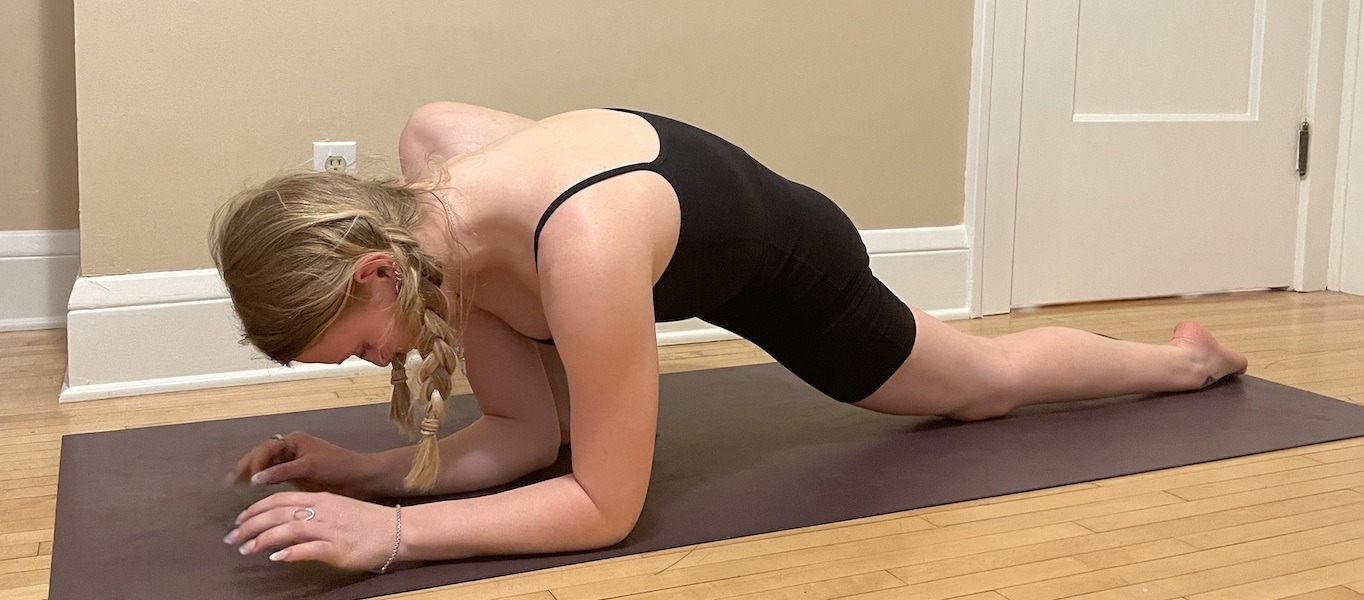
Contrary to traditional yang-style practices, in yin yoga you may let the front knee open to the side as far as is comfortable rather than engaging muscle to keep the knee aligned with the hip. Stay in the pose three to five minutes, exploring sensations and breathing gently. Rest in Child’s pose before repeating on the other side.
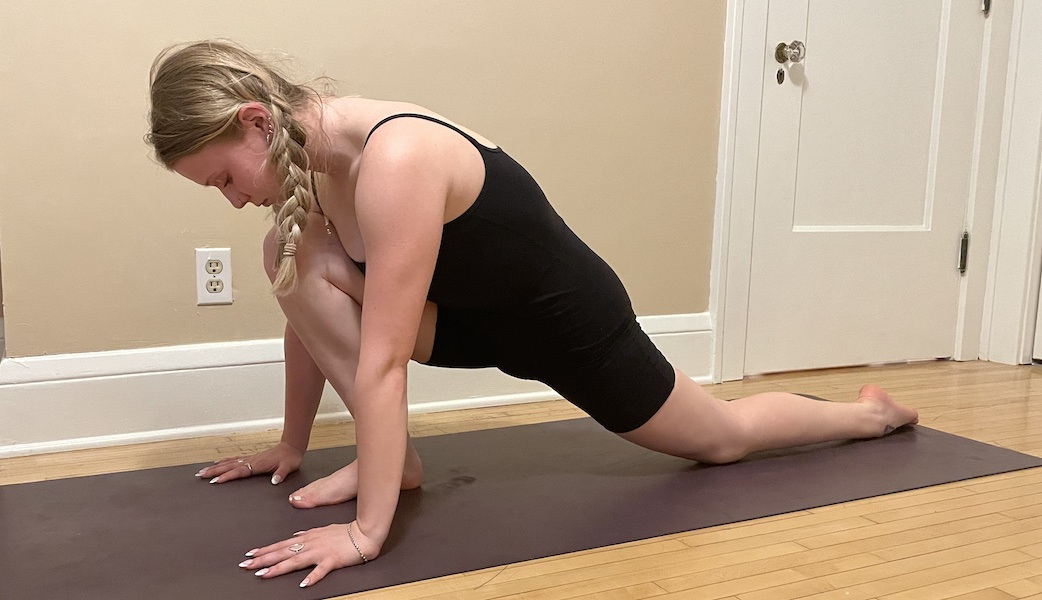
2. Saddle Pose
Begin by sitting on your feet. Slowly reach your hands behind you to the floor and then walk back until you feel the tugging along the fronts of your thighs. You can keep the knees together or let them separate, whichever leads you to a sensation you would like to work with. Relax the muscles in your neck and throat. Soften your gaze. Stay for three to five minutes.
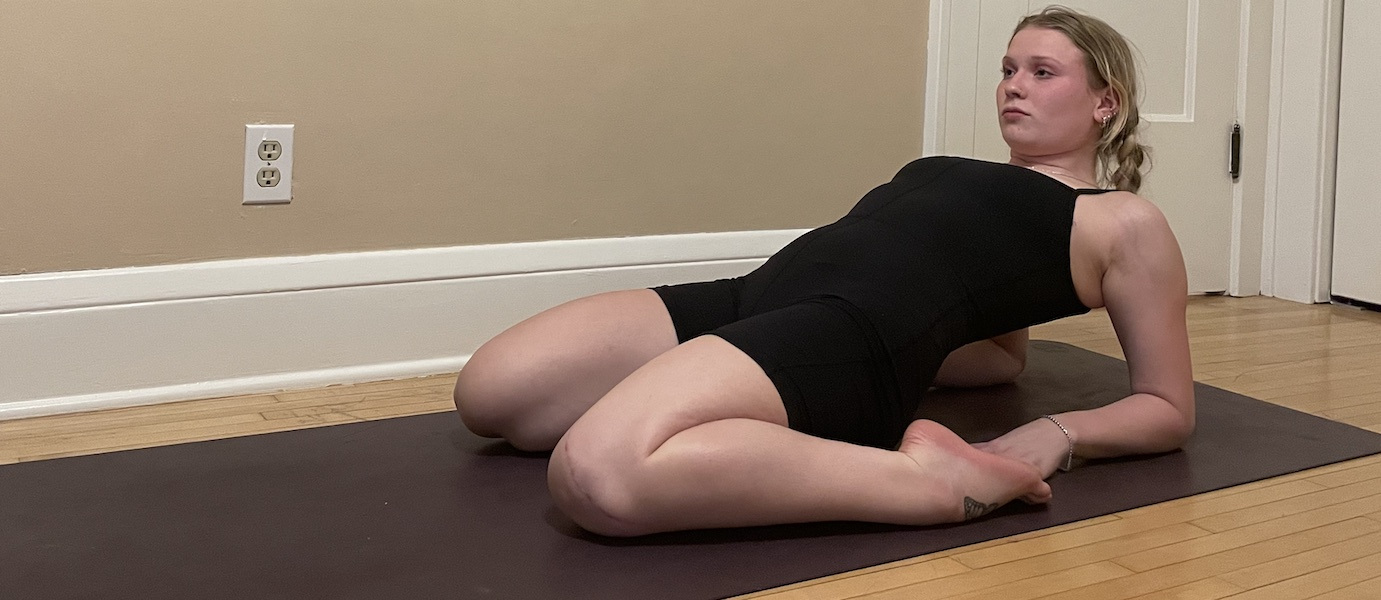
If you feel any pain in your knees, modify by placing a pillow or cushion between your hips and feet.
3. Puppy Pose
Begin in a Table pose. Gently walk your hands forward as your chest lowers to the ground, creating a soft u-shape in the spine. Imagine your heart opening and releasing as you breathe. Stay in the pose for three to five minutes.
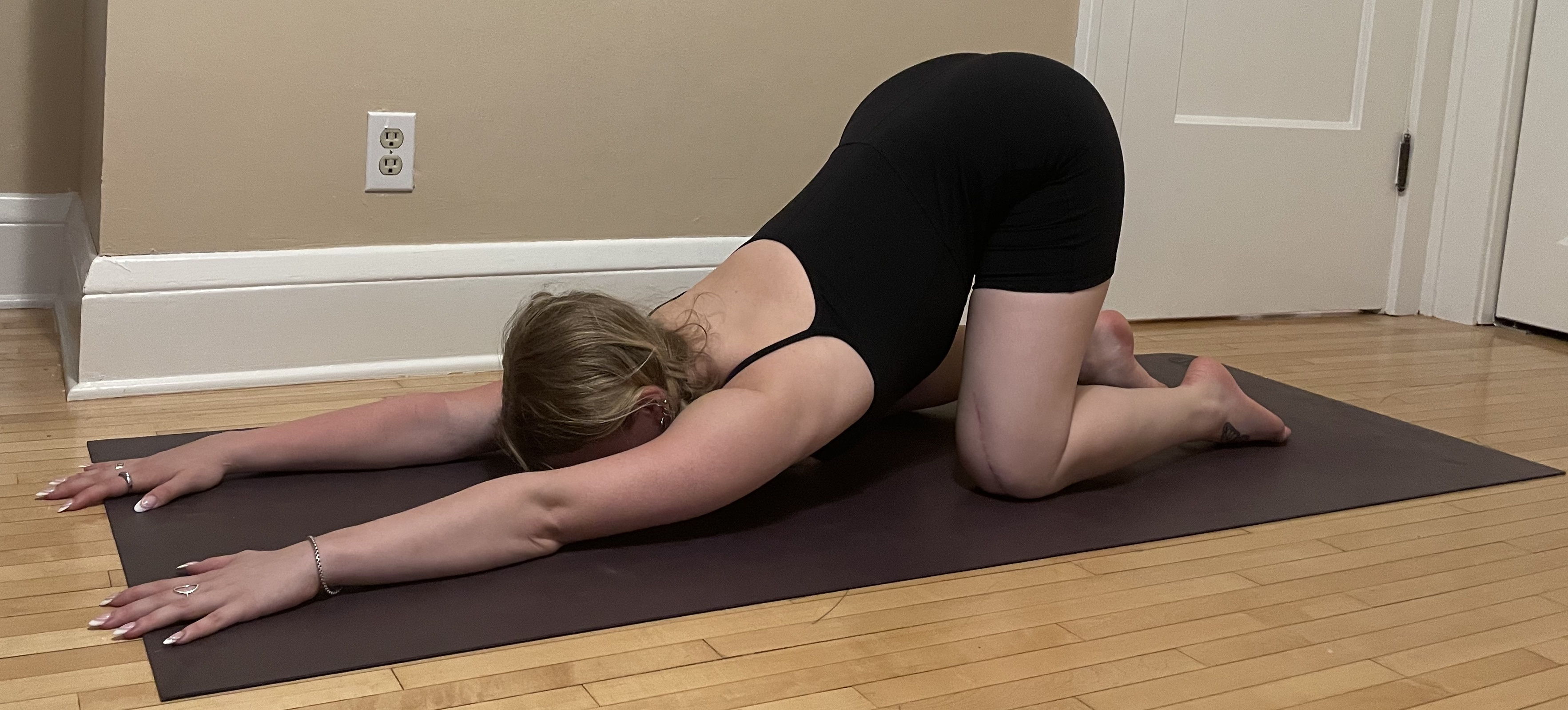
4. Spinal Twist
Start by sitting with both legs stretched out in front of you. Cross the right foot over the left leg. You may stay here, or bend your left leg until your foot reaches your right hip as shown. Lengthen your spine on an inhale. As you exhale, rotate to the left, keeping your spine as vertical as you can. For support, you may hug the left knee with the right elbow, or bring your right elbow to the outside of the left knee. Turn your head and neck toward the direction of the twist. Stay and breathe in the twist for three to five minutes before repeating on the other side.
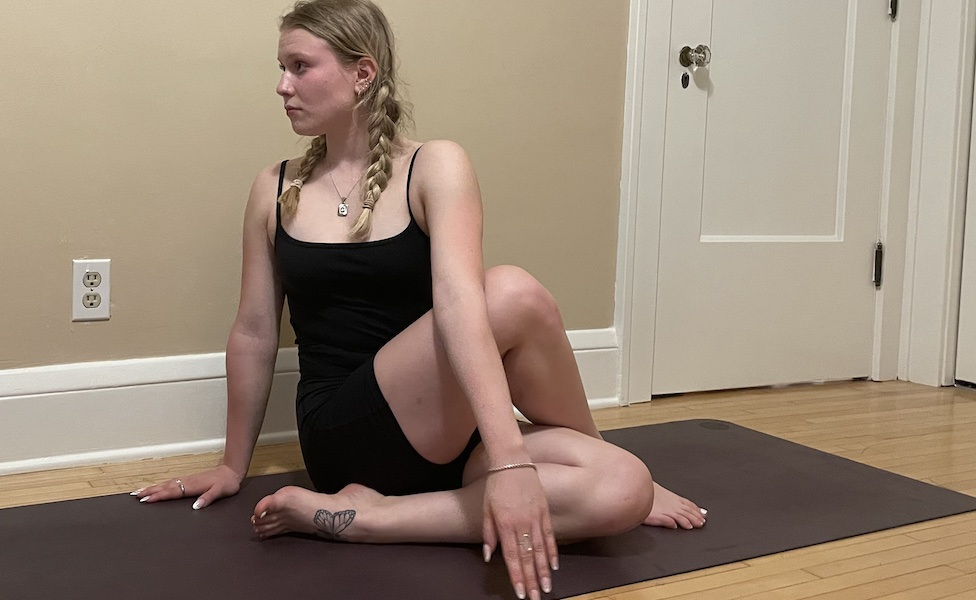
End with Savasana, anywhere from five to 15 minutes in length, to let your body integrate the changes.
Reminders for Practicing Yin Yoga
- A yin yoga practice does not need to be long to be effective: three to five postures, held for three to five minutes each, can be a wonderfully nourishing practice.
- Unlike yang-style practices, try to relax the muscles around the stretch (unless you have pain or injury, in which case, engage the muscles surrounding the area, and practice cautiously).
- Stillness and silence are trademarks of this practice. Once settled in a posture, try to become very still.
- Let yourself feel your emotions. This practice almost assuredly will cause emotions to arise, either directly or through a sense of discomfort or dis-ease somewhere in the body or mind. Stay with them until they move on, like clouds passing in the sky.
- Stay mindful and present with your thoughts. Try not to let yourself slip into daydreaming or planning the rest of your day.
- Discomfort is okay and welcomed; pain is not. Practice discernment and communicate with your body to know what is right and what needs modification.
- The rest between poses is just as important as the poses themselves. This is when all the energy that was collected and stimulated floods the whole channel, top to bottom.
- Move in and out of the postures slowly, using your breath. This is especially important after holding still for several minutes.










































